How do you get to Tammany Hall?
Um, that’s a great question. … Well, actually 150 years ago you could have gotten there by attending the Democratic National Convention, which kicked off in Tammany’s brand new headquarters in New York City on Independence Day in 1868.
In its July 18, 1868 issue (page 451 at the Internet Archives) Harper’s Weekly reported that the main Democratic newspaper in New York City listed the delegates to the convention in its July 4th issue and referred to them as “The Men upon whom the Republic relies for Salvation.” Three southern states (Alabama, North Carolina, and South Carolina) were represented and each of these delegations included at least one rebel general. Former Confederate general Wade Hampton led South Carolina’s delegation. The Democratic paper referred to him as “unquestionably the leading man in South Carolina, and fills more nearly than any other the place left vacant by CALHOUN in the hearts of the white people.” Harper’s remembered that back in June Mr. Hampton toasted “The Lost Cause.” No one should forget that:
Five years ago these “friends of the Republic” celebrated the day by striking at its heart at Vicksburg and Gettysburg. This year they celebrated it by seeking some other means of consummating the crime that was then – thanks to the brave hearts and hands of loyal men! – wholly baffled. …
According to Walter Brian Cisco, Wade Hampton was surprised that he was selected as a delegate to the convention and only accepted the job because the offer “showed a spirit of conciliation.” “Southern delegates kept a relatively low profile, not wishing to embarrass the party and hamper its chances for electoral success in the North.” [1]
On Independence Day August Belmont welcomed delegates to the convention. You can read his speech at Daily Observations from the Civil War. Here’s a paragraph:
… Instead of restoring the Southern States to their Constitutional rights, instead of trying to wipe out the miseries of the past by a magnanimous policy, dictated alike by humanity and sound statesmanship, and so ardently prayed for by the generous heart of the American people, the Radicals in Congress, elected in an evil hour, have placed the iron heel of the conqueror upon the South. Austria did not dare to fasten upon Hungary, nor Russia to impose upon conquered Poland, the ruthless tyranny now inflicted by Congress upon the Southern States. Military satraps are invested with dictatorial power, overriding the decisions of the courts, and assuming the functions of the civil authorities, the whole population are disfranchised or forced to submit to test oaths alike revolting to justice and civilization; and a debased and ignorant race, just emerged from servitude, is raised into power to control the destinies of that fair portion of our common country. …
Apparently the dictatorial military satraps weren’t going away any time soon if Republicans stayed in power because, as Mr. Belmont pointed out when he closed his speech, the GOP chose as its presidential candidate “the general commanding the armies of the United States. Can there be any doubt left as to the designs of the Radicals, if they should be able to keep their hold on the reins of government? They intend Congressional usurpation of all the branches and functions of the government, to be enforced by the bayonets of a military despotism.”
The New-York Times didn’t share Mr. Belmont’s concern. In its July 4, 1868 issue the paper dutifully headlined the Democratic convention, but devoted all the front page’s right-hand column to what seems to have been an endorsement of Republican presidential candidate Ulysses S. Grant, even before the Democrats picked their candidate:
Another notable headline appeared in the Times’ July 7th issue: “Petition for a Woman-Suffrage Plank in the Platform.” You can read all about it here. A letter from Susan B. Anthony, on behalf of the Woman’s Suffrage Association of America, was read to the convention. Ms. Anthony pointed out that the Republicans were trying to insert the word “male” in the Constitution, which would be “a new barrier against the enfranchisement of women.”
Over this base proposition the nation has stood silent and indifferent, while the dominant party have with one hand lifted up 2,000,000 black men, and crowned them with the honor and dignity of citizenship, with the other they have dethroned 15,000,000 white women – their own mothers and sisters, their own wives and daughters – and cast them under the heel of the lowest orders of manhood.
Ms. Anthony reminded the Democrats that they were traditionally the party of increasing suffrage. By working to remove the property qualification they enfranchised working men, who therefore tended to vote Democrat. If the party promoted and achieved female suffrage, they could expect similar electoral success. The Democrats listened to the letter but didn’t add the plank.
_________________________________________________
In May the Republican Convention unanimously nominated General Grant for president on the first ballot. It took the Democrats over twenty tries. Eventually, on July 9th they settled on former New York governor Horatio Seymour, who didn’t seek the nomination but accepted it. His running mate was Frank P. Blair (Jr.).

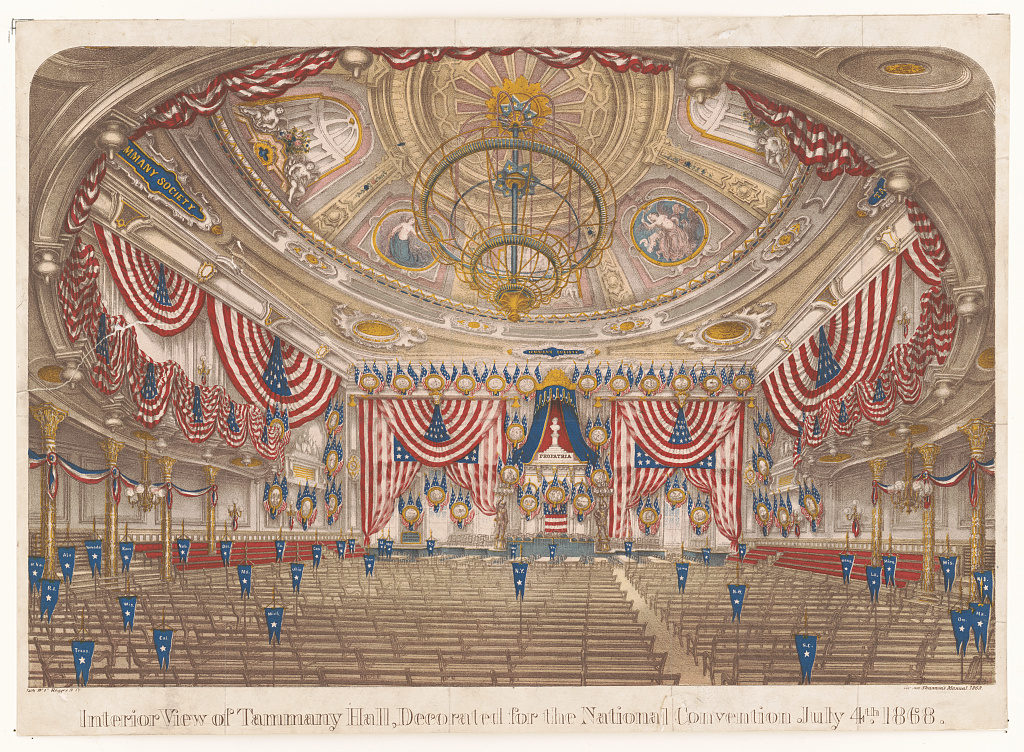
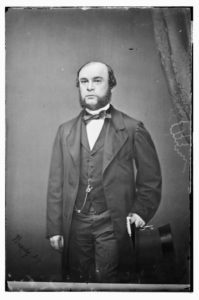

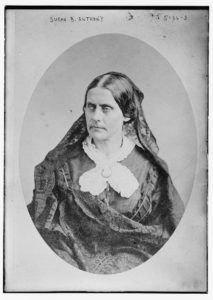
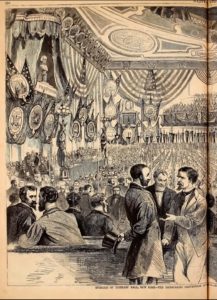
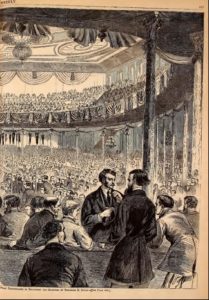
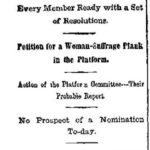

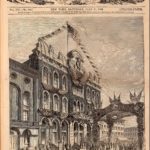
![Democratic candidate / Gray. ([New York] : Lith. & published by Matier & Kent, 35 Maiden Lane, N.Y., c1868.; LOC: https://www.loc.gov/item/2003689253/)](https://www.bluegrayreview.com/wp-content/uploads/2018/07/07456v-1024x659.jpg)